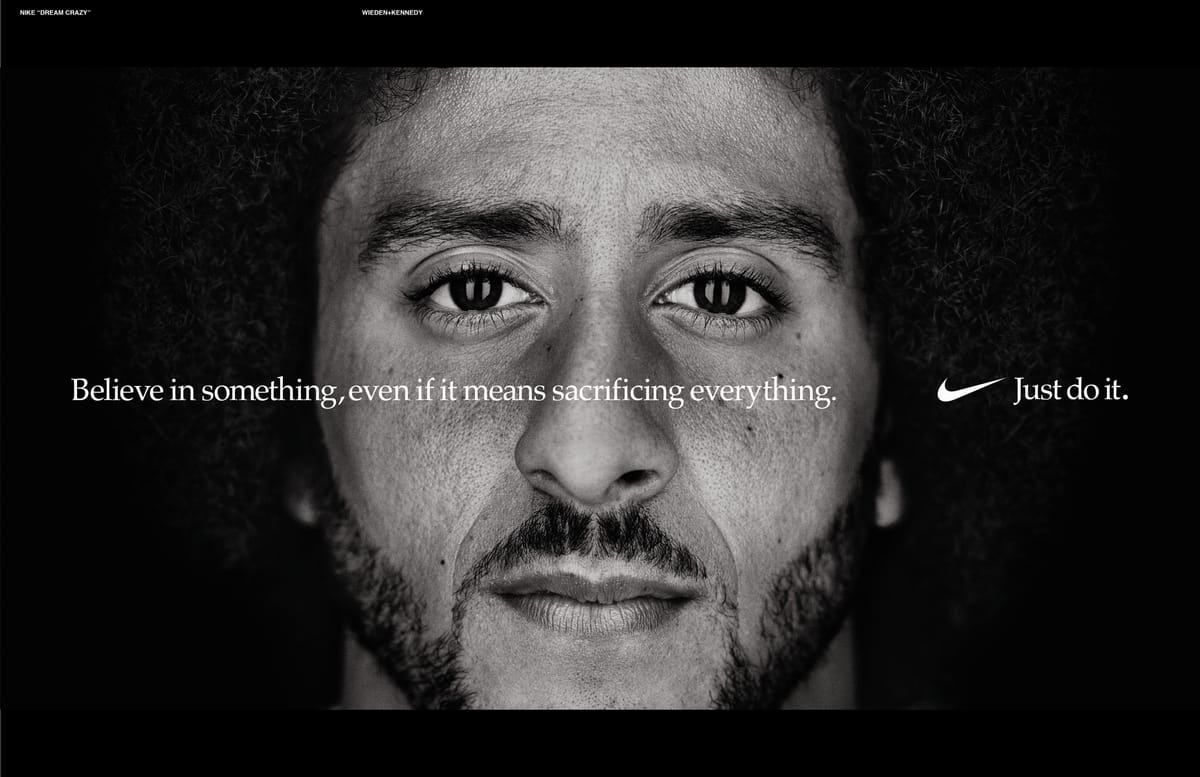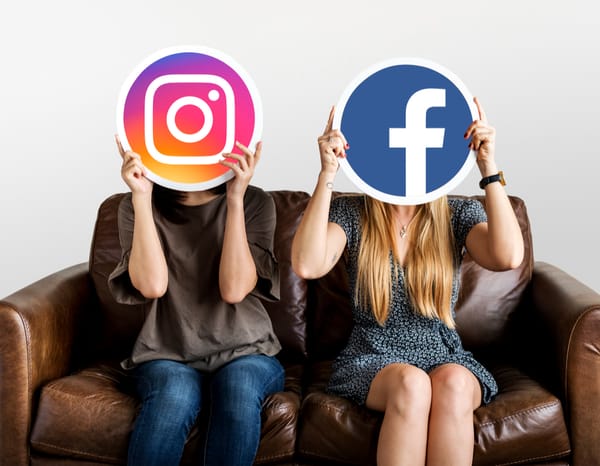The Changing Face of Marketing: More Than Just Winning
Welcome to the new era of marketing, where the journey trumps the destination, and the struggle is as celebrated as the victory.

Picture this: A runner, drenched in sweat, muscles straining, not as they cross the finish line, but as they push through the gruelling middle miles of a marathon. This image, once relegated to the background of marketing campaigns, is now taking centre stage.
Welcome to the new era of marketing, where the journey trumps the destination, and the struggle is as celebrated as the victory.
From Winning to Journey: The Evolution of Marketing Narratives
Remember when every advert seemed to scream, "Be the best!" or "Just do it!"? Those days aren't entirely behind us, but there's a seismic shift occurring in the world of marketing. Today's consumers aren't just interested in the glory of the win; they're captivated by the grit of the journey.
This transformation isn't just a fleeting trend. It's a reflection of a deeper change in our societal values, a move towards authenticity, relatability, and the acknowledgment that life's true richness often lies in the challenges we face and overcome.
A Trip Down Memory Lane: When Winning Was Everything
To truly appreciate this shift, let's take a nostalgic journey through the marketing landscape of yesteryear.
Nike: The Early Days
In the 1980s and '90s, Nike's advertising was a masterclass in victory-focused marketing. Their iconic "Just Do It" campaign, launched in 1988, was a clarion call to achievement. It wasn't about the process; it was about the result.
Advertisements featured elite athletes at the pinnacle of their success – crossing finish lines, scoring winning goals, standing atop podiums.One of the most memorable ads from this era featured Michael Jordan in his prime. The message was clear: be like Mike, win like Mike.
The focus was on the end goal, the victory, the moment of triumph. This approach resonated deeply with a generation that equated success with being the best, the fastest, the strongest.
Coca-Cola's "Taste the Feeling"
Fast forward to 2016, and we see Coca-Cola's "Taste the Feeling" campaign. While seemingly more focused on the moment than Nike's victory-centric ads, it still presented an idealised endpoint.
The campaign showcased perfect moments of refreshment and happiness, implying that by consuming Coca-Cola, one could instantly access a state of blissful satisfaction.
These campaigns were powerful because they tapped into the aspirational nature of consumers. They sold not just products, but dreams of being winners, achievers, and the best in their fields. The message was simple: use our product, and you too can be a champion, or at least feel like one.
The Winds of Change: Embracing the Journey
As we entered the new millennium, a gradual but distinct shift began to occur. Consumers started craving more than just the promise of victory. They wanted authenticity, relatability, and stories that mirrored their own experiences – struggles and all.
Nike's Evolution: "Find Your Greatness"
In a beautiful example of brand evolution, Nike itself embodied this shift. Their 2012 "Find Your Greatness" campaign was a far cry from the victory-centric messaging of their early days. One of the most talked-about ads from this campaign featured a young boy, overweight and out of breath, jogging slowly down a long, empty road.Voiceovers do not promise instant success or transformation.
Instead, it simply states, "Greatness is no more unique to us than breathing. We're all capable of it. All of us." This ad celebrates the effort, the struggle, and the personal journey towards improvement, rather than focusing solely on the finish line.
Apple's "Behind the Mac"
Apple, a brand long associated with sleek perfection, took a refreshingly human approach with their "Behind the Mac" campaign. Launched in 2018, this series of ads showcased real people – artists, entrepreneurs, students – using Mac computers in their creative processes.
One particularly powerful instalment featured a variety of differently-abled individuals using adaptive technologies with their Macs. The ad doesn't focus on the end products of their work, but on the process itself – the late nights, the frustrations, the moments of inspiration. It's a celebration of the journey of creation, with all its ups and downs.
These campaigns resonated deeply with modern consumers. They acknowledged that life isn't always about winning; it's about trying, failing, and trying again. They celebrated the human spirit not in moments of triumph, but in moments of perseverance.
Why the Journey Resonates: A Deep Dive
The shift towards journey-focused marketing isn't just a creative whim. It's rooted in profound psychological and social factors that reflect broader changes in our society.
The Power of Empathy and Relatability
When we see stories of struggle and perseverance, we see ourselves. Most of us are not Olympic athletes or chart-topping musicians. But we all know what it's like to face challenges, to doubt ourselves, to pick ourselves up and try again.
Dr. Brené Brown, renowned researcher and author, puts it beautifully: "Empathy is a strange and powerful thing. There is no script. There is no right way or wrong way to do it.
It's simply listening, holding space, withholding judgement, emotionally connecting, and communicating that incredibly healing message of 'You're not alone.'"Journey-focused marketing taps into this power of empathy. It tells consumers, "We understand your struggles. We're on this journey with you."
Cultural Shifts: Redefining Success
Our society is increasingly recognizing that success isn't just about the end goal. It's about growth, resilience, and well-being along the way. This shift is reflected in everything from the rise of mindfulness practices to the growing emphasis on work-life balance.
The American Psychological Association reports a growing trend towards valuing experiences over possessions, especially among younger generations. This preference for experiences naturally lends itself to an appreciation of the journey, not just the destination.
Real Beauty, Real Impact: Dove's Game-Changing Campaign
Perhaps no campaign better exemplifies this shift than Dove's "Real Beauty" initiative. Launched in 2004, this long-running campaign turned the beauty industry on its head by celebrating women of all shapes, sizes, and colours.
Instead of promising transformation to an idealised standard of beauty, Dove focused on the journey of self-acceptance. They shared stories of women learning to love their bodies, flaws and all. The campaign didn't just sell soap; it sparked a global conversation about beauty standards and self-esteem.
The impact was enormous. Not only did it significantly boost Dove's sales and brand equity, but it also had a measurable impact on women's self-esteem. A study published in the International Journal of Advertising found that exposure to Dove's Real Beauty sketches led to more positive body image among women.
This campaign demonstrated the power of journey-focused marketing to not just sell products, but to create meaningful change in society.
Storytelling: The Heart of Modern Marketing
At the core of this shift towards journey-focused marketing lies the art of storytelling. Stories have always been powerful tools for connection and persuasion, but in the digital age, they've become the lifeblood of effective marketing.
Why Stories Work
Neuroscience gives us insight into why stories are so impactful. When we hear a fact, only the language processing parts of our brain activate. But when we hear a story, our brains light up as if we're experiencing the events ourselves.
This phenomenon, known as neural coupling, explains why stories can be so much more memorable and persuasive than simple facts or slogans.
Small Business Success Through Storytelling
The beauty of story-based, journey-focused marketing is that it levels the playing field. Small businesses, which may not have the resources for big-budget ad campaigns, can compete effectively by sharing authentic stories of their own journeys.
Take Spanx, founded by Sara Blakely. The company's origin story – of Blakely cutting the feet off her pantyhose to create a smooth look under white pants – is now legendary. This story of a real woman solving a real problem resonated with consumers far more than any polished ad campaign could have.
Or consider Patagonia, which has built a loyal following not just through the quality of their products, but through their transparency about their environmental journey. They don't claim perfection; instead, they share their ongoing efforts, challenges, and occasional setbacks in trying to become a more sustainable company.
These examples show that consumers are drawn to brands that show their human side – their struggles, their learning processes, and their commitment to improvement.
Practical Steps: Implementing Journey-Focused Marketing
So, how can businesses, especially smaller ones, implement this approach? Here are some practical steps:
- Identify Your Brand's Journey: Every business has a story. What challenges have you faced? What lessons have you learned? Don't be afraid to share setbacks with successes.
- Engage Your Audience with Authenticity: Be genuine in your storytelling. Today's consumers can spot inauthenticity a mile away. Share real experiences, even if they're not always flattering.
- Use Multiple Channels: Your journey can be shared through various mediums – social media posts, blog articles, video content, podcasts. Choose the channels that best suit your brand and your audience.
- Encourage Customer Stories: Invite your customers to share their own journeys with your product or service. User-generated content can be incredibly powerful.
- Focus on Continuous Improvement: Show your audience that you're always striving to be better. Share your goals, your progress, and yes, even your failures.
- Create a Content Calendar: Plan your storytelling over time. This helps ensure a consistent narrative and keeps your audience engaged long-term.
Remember, the goal isn't to replace all mention of achievements or benefits with stories of struggle. It's about finding a balance, showing both the journey and the destination.
The Road Ahead: The Future of Journey-Focused Marketing
As we look to the future, it's clear that this trend towards journey-focused marketing is more than just a passing fad. It's a fundamental shift in how brands connect with consumers.
We're likely to see more brands embracing vulnerability, sharing behind-the-scenes glimpses of their processes, and inviting consumers to be part of their ongoing story. This approach not only sells products but builds communities and promotes long-term loyalty.
Moreover, as issues like mental health, social justice, and environmental sustainability continue to gain prominence, brands that can authentically align their journeys with these larger societal concerns will likely find the most success.
Conclusion: Your Story Awaits
In the end, the shift from winning-focused to journey-focused marketing reflects a broader change in our society. We're moving away from a world of glossy perfection and unattainable ideals, towards one that values authenticity, resilience, and shared human experiences.
For marketers and business owners, this shift presents an incredible opportunity. It's a chance to connect with consumers on a deeper level, to build brands that resonate with real human experiences, and to create marketing that doesn't just sell products, but tells stories that inspire and uplift.
So, as you consider your marketing strategy, ask yourself: What's your brand's journey? What challenges have you faced? What lessons have you learned? Your story – with all its ups and downs, its struggles and triumphs – could be your most powerful marketing tool.
After all, in the world of modern marketing, it's not just about crossing the finish line. It's about every step, every stumble, and every small victory along the way. Your journey is your story. It's time to tell it.




